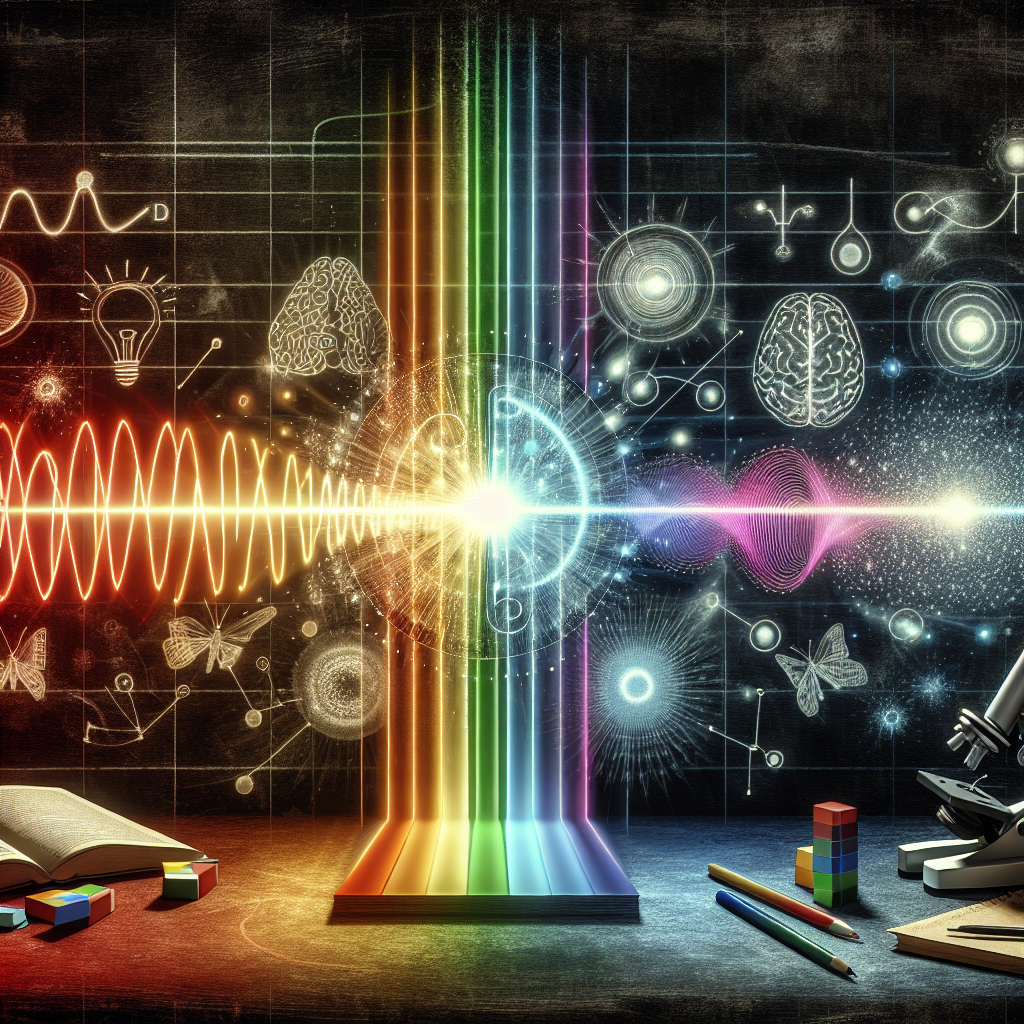Introduction
Have you ever wondered how the colors you see transform into the sounds you hear? The journey spanning from light to sound is not just a magical experience; it’s a fascinating field of study known as psychophysics. This multidisciplinary area explores the relationship between sensory experiences and the physical properties of stimuli, revealing how we perceive the world around us. In this article—From Light to Sound: The Spectrum of Psychophysical Research—we delve into this captivating field, explore cutting-edge studies, and uncover the implications for our everyday lives.
The Foundations of Psychophysics
What is Psychophysics?
Psychophysics is the branch of psychology that quantifies the relationship between physical stimuli and the sensations and perceptions they evoke. With roots in the works of pioneers like Gustav Fechner and Ernst Weber, psychophysics lays the groundwork for understanding human perception.
Historical Background
In the 19th century, Fechner introduced the concept that sensations could be measured and quantified. This groundbreaking work allowed researchers to explore sensory thresholds and how they relate to physical stimuli. Today, methodologies and technological advancements have expanded this field, leading to novel insights from light to sound.
Key Concepts
Thresholds
Psychophysics identifies two key types of thresholds:
-
Absolute Threshold: The minimum stimulus level that can be detected 50% of the time (e.g., the faintest sound a person can hear).
- Difference Threshold (Just Noticeable Difference): The minimum difference required for a person to perceive a change in stimulus (e.g., the minimum change in volume needed for someone to notice).
Exploring the Spectrum: Light
The Nature of Light
Light, part of the electromagnetic spectrum, is composed of waves that vary in frequency. These variations influence how we perceive color—different wavelengths represent different hues. Our perception of light is not solely dependent on the physical properties but also on how our eyes and brain process these stimuli.
Case Study: Color Perception in Art
A fascinating study on color perception conducted by researchers at MIT illustrated the effects of light on artwork. When paintings were viewed under different lighting conditions, the perceived color hues differed dramatically. This research underscores how light not only shapes our aesthetic experiences but also emphasizes the subjective nature of perception itself.
Exploring the Spectrum: Sound
The Nature of Sound
Sound is produced by vibrations that travel through mediums, creating waves that our ears interpret. The frequency of these waves determines pitch, while amplitude influences loudness. Understanding how we perceive sound is vital for various applications, including music, environmental sounds, and communication.
Case Study: Audiology and Hearing Aids
Innovations in audiology demonstrate the integral role of sound perception. A recent study conducted by the Hearing Loss Association of America highlighted how hearing aids enhance sound clarity for individuals with hearing impairments. The study revealed that when users adjusted their devices based on psychoacoustic principles, they experienced significant improvements in understanding speech in noisy environments.
Psychophysical Research: Bridging Light and Sound
Multisensory Perception
One of the most intriguing aspects of psychophysical research is multisensory perception. The brain integrates information from various sensory modalities, which can enhance our understanding and experience of the environment.
Case Study: Audiovisual Integration
A pioneering study examined how people perceive words when presented with conflicting auditory and visual signals. Participants watched videos where the lips moved differently from the audio, resulting in a "McGurk effect." This phenomenon highlights how our perception of sound can be altered by visual stimuli, showcasing the seamless integration of light and sound.
Practical Applications
The insights from From Light to Sound: The Spectrum of Psychophysical Research have far-reaching implications:
-
Education: Understanding sensory perception can enhance teaching methods, making learning more effective.
-
Technology: Innovations in virtual reality rely on psychophysical principles to create immersive experiences by synchronizing visual and auditory stimuli.
- Healthcare: Psychophysical studies assist in developing better diagnostic tools for sensory disorders.
The Role of Technology in Psychophysical Research
Advances in Measurement Techniques
Technological innovation has revolutionized psychophysical research. Modern tools such as eye-tracking, EEG, and fMRI allow researchers to explore the brain’s response to stimuli in real-time, providing insights into the complex interaction between light and sound.
The Future of Psychophysical Research
The future of this field looks promising with the integration of artificial intelligence and machine learning. These technologies can analyze vast datasets to reveal patterns in sensory processing, leading to new breakthroughs in understanding human perception.
Conclusion
From light to sound—The Spectrum of Psychophysical Research—opens a window into the intricate systems that govern our sensory experiences. Understanding this relationship not only enhances our appreciation of the world but also informs advancements in various fields, from education to healthcare. As we continue to explore this fascinating domain, we inspire future generations to bridge the gaps between sensory modalities, creating a richer, more interconnected understanding of what it means to perceive.
FAQs
1. What is psychophysics?
Psychophysics is the study of the relationship between physical stimuli and the sensations and perceptions they evoke in individuals.
2. How does light influence sound perception?
Although light and sound are distinct sensory modalities, they can influence each other through multisensory integration, affecting how we perceive one or the other.
3. Why is psychophysical research important?
Psychophysical research is essential for understanding human perception, enhancing learning and teaching methods, improving healthcare, and informing technological advancements.
4. How do thresholds relate to sensory perception?
Thresholds indicate the minimum stimulus levels required for detection (absolute) or the smallest change needed for distinction (difference threshold), highlighting our sensitivity to various stimuli.
5. What role does technology play in psychophysical research?
Advancements in technology, such as brain imaging techniques and machine learning algorithms, enable researchers to explore sensory processing in unprecedented detail.
Embarking on the journey from light to sound reveals the rich tapestry of human perception and the myriad ways we interact with our environment. Understanding this spectrum not only enriches our lives but can also foster innovation and discovery in our rapidly evolving world.

